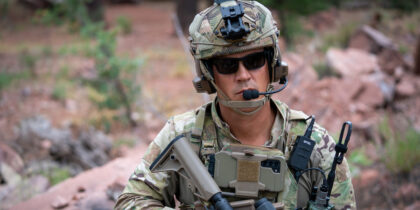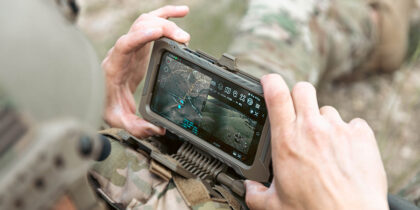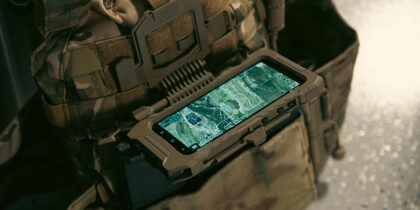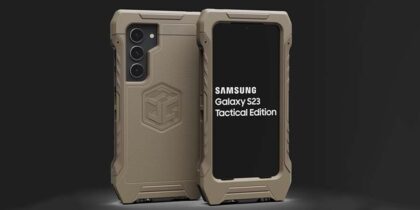Sign up to download the full white paper as a PDF.
In military conflicts, cognitive dominance — the ability to consistently process and rapidly make critical decisions faster than an adversary — ensures warfighters can more effectively dictate the terms of engagement, and ultimately succeed. While the U.S. Military has long maintained a technological advantage on the battlefield, that advantage is shifting, as commercial and emerging technologies become more accessible and affordable worldwide. As a result, near-peer states and nonnation-states are rapidly challenging U.S. advantage in every domain.
Put simply, the U.S. must quickly adapt to retain its competitive, and cognitive, edge.
In response, the U.S. Special Operations Command (USSOCOM) is shifting to new tactics, techniques and procedures that push tailored information to operators where and when they need it, rather than sharing a common dataset among Special Operations Forces (SOF) operators at all levels. This concept is driving USSOCOM’s Hyper-Enabled Operator (HEO), which positions cognitive dominance at the forefront of USSOCOM technology development priorities.
In real terms, this means using technology tools to reduce the cognitive load for operators, delivering only the data needed to fulfill the mission and allowing them to opt out or filter information for later review. This gives operators greater situational awareness, decision-making capability and control of resources through automation and artificial intelligence (AI). It also means tackling challenges such as sustaining long-range communications and optimizing data throughput, especially in denied or contested areas.

With a new breed of mobile devices built specifically for tactical scenarios, essential data capture and computing can be done at the tactical edge. Also, improved displays and better-designed interfaces can speed reaction times while device-agnostic connectivity can increase the reliability of positioning and communications in remote locations. This approach is already taking shape, with solutions such as the Android Team Awareness Kit (ATAK), an interactive, map-based platform used by both the military and civilian first responders. ATAK delivers high-fidelity situational awareness data, from terrain and weather maps to drone footage, to the smartphones and tablets of frontline operators.
To understand what this future looks like, the role mobility solutions play and the radical impact on forward operations requires a deeper look at how HEO is transforming the SOF operator capability and connectivity, along with the “Hard Problems” that must be overcome. Some of the greatest warfighter needs, requirements and opportunities center around the new data-centric, operator-centric technologies — mobile devices, including smartphones, tablets and wearables — that bring data and computing and mission-specific capabilities to the point of need.
Cognitive dominance: Built on HEO’s four technology pillars
USSOCOM defines the HEO concept as furthering technologies that “enhance the SOF operator’s cognition by increasing situational awareness, reducing cognitive load, and accelerating decision-making at the tactical edge.” By making accurate, time-sensitive information available to field operators and displaying it in a cohesive, easy-to-grasp manner, SOF combatants can assess and act on that data more quickly and effectively.
HEO would achieve these benefits by combining and synchronizing systems in four technology areas, or pillars:
- Data/Sensors
- Communications
- Computing
- Human-Machine Interface
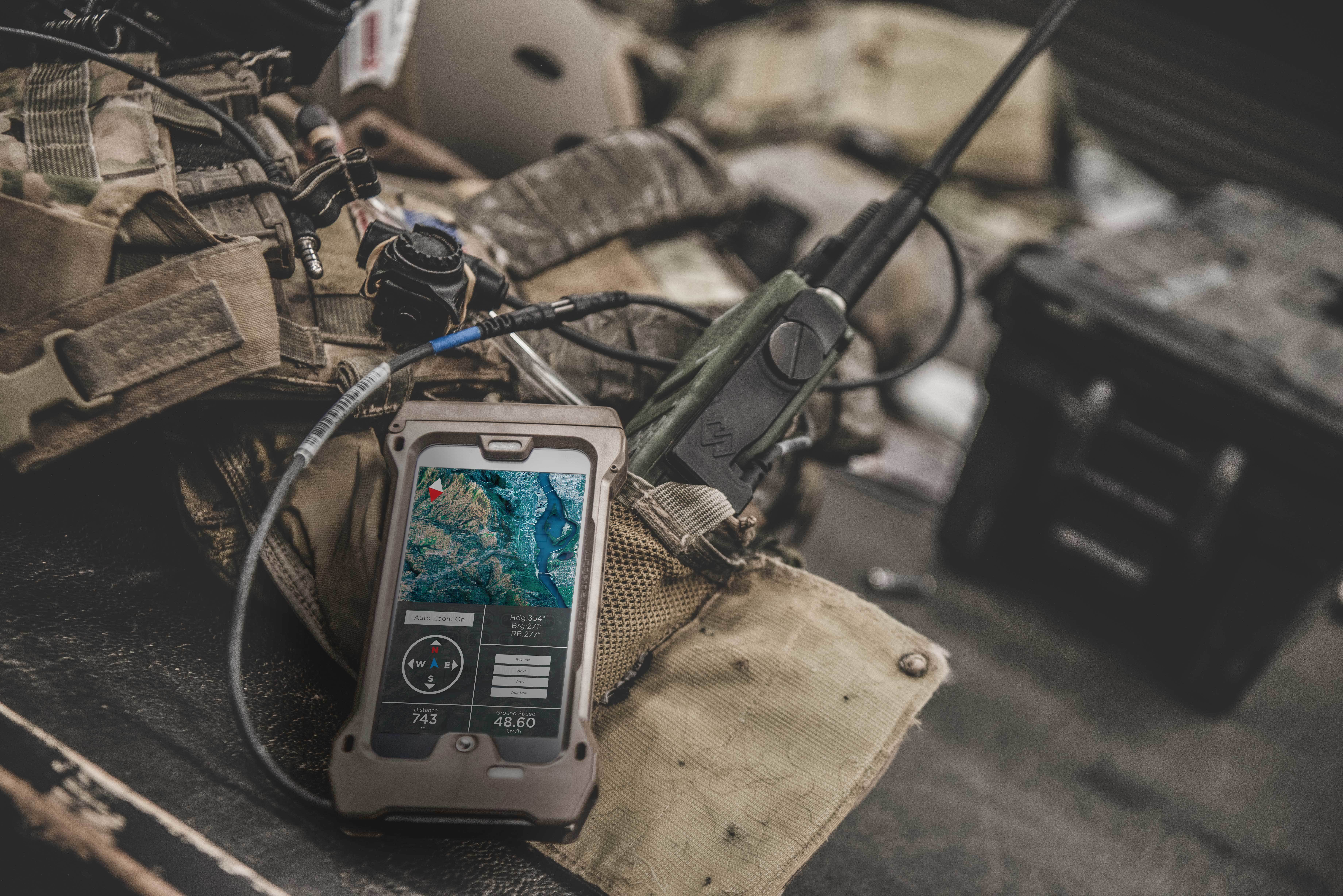
Together, the four pillars address the USSOCOM Science and Technology Directorate’s three most pressing priorities — what they call their “Hard Problems” — to help ensure SOF effectiveness in the 2020-2030 timeframe, the target for fielding future solutions:
- Small Unit Dominance (SUD): Provide SOF small units the ability to act ahead of crisis and help achieve favorable outcomes for the United States by shaping the decision space and strategic options.
- Mission-Assured Communications (MAC): Provide long-range communications and optimize data throughput in contested and denied areas.
- Signature Management (SM): Enable communications with low probability of intercept/low probability of detection in highly contested environments
Because of their ubiquity, usefulness and ability to integrate new and emerging technologies quickly, modern mobility solutions are a key element of a successful HEO deployment. Commercial platforms such as Samsung Galaxy Tactical Edition smartphones provide powerful edge computing and interoperable communications capabilities that can deliver much greater situational awareness than ever before, while maintaining a high level of security to protect both data and personnel.
Pillar priorities
Across all four HEO pillars, USSOCOM’s top priorities for research, development and acquisition are low-size, -weight and -power (SWAP) technologies, followed by modular, cross-domain solutions that reduce the complexity of operations. Scalable, resilient and robust systems with defense-grade security are also must-haves.
Maintain cognitive dominance across all domains
Sign up to download the full white paper as a PDF. Download Now
Fully custom mobile hardware and software solutions can be highly complex, expensive and difficult to deploy and manage. Additionally, they often require time to develop and procure — time that SOF operators in the field simply do not have. To meet these top priorities, USSOCOM is focused on acquiring mission-ready solutions, leveraging commercial off-the-shelf (COTS) hardware with custom-tailored software specifically designed for the unique needs of tactical teams and special operators. USSOCOM has leveraged COTS products for many years, and this preference remains essential to its technology and budget strategies going forward.
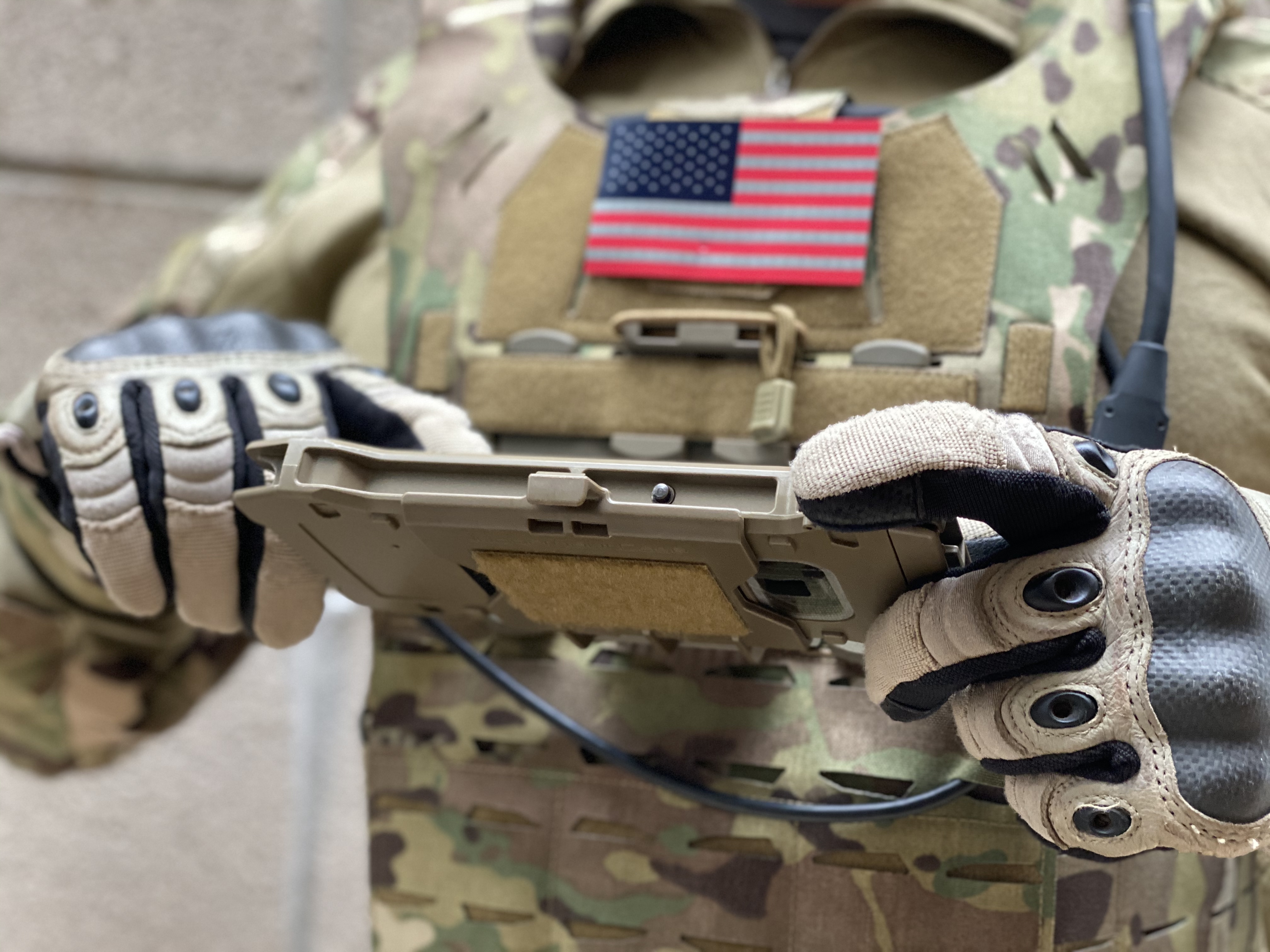
And quickly evolving technology and accelerating operations tempo make it important to field new solutions quickly.
COTS mobile solutions for HEO — such as the Samsung Galaxy S9 Tactical Edition and similar devices that bring edge computing power and improved situational awareness to frontline operators — are readily available and designed for extreme environments while also being faster to deploy and easier to manage and maintain.
Pillar 1: Data/Sensors
Hyper-enabled operators rely on multiple types of information, and the different kinds of equipment that provide it, in order to perform the data-driven decision-making that improves cognitive dominance. The HEO Data/Sensors pillar involves “data assets and standoff/remote biometric sensors that characterize individuals based upon physical, behavioral, physiological, and electromagnetic signatures.”
To support the Hyber-Enabled Operator, USSOCOM needs mobile devices that can interoperate (send, process and receive data) with diverse sensors and peripherals, including existing equipment. Also essential: devices with powerful processors to seamlessly run multiple tactical applications, including ATAK or Kinetic Integrated Low-Cost Software Integrated Tactical Combat Handheld (KILSWITCH) simultaneously without cloud support.
Pillar 2: Communications
SOF operators need real-time or near-real-time data exchange and related capabilities from the command and control level to the tactical edge. The HEO Communications pillar covers “expeditionary communication and position, navigation and timing (PNT) capabilities that are device-agnostic and work in remote and highly contested/denied environments without access to U.S. Government satellites.” Long-range communications and optimizing data throughput in contested and denied areas, in fact, pose the biggest technological hurdles for HEO.
These communications must reliably interoperate with conventional forces’ equipment and do so both over the horizon and beyond line of sight. SOF operators must also able to communicate with each other and friendly forces in any environment with low probability of intercept or detection by adversaries.
Security of these communications is paramount: a top R&D priority for USSOCOM is the development of a wireless/tethered personal area network to securely share intelligence while protecting classified and mission data. Additionally, mobile devices will need to operate in “stealth mode,” with the ability to disable LTE, e-911 and all RF broadcasting for off-grid communications.
Pillar 3: Computing
For HEO, USSOCOM needs mobile devices that carry powerful hardware and software tailorable to multiple missions across all domains — ground, air, maritime, space and cyber. The HEO Computing pillar involves “decentralized data processing, software algorithms, and computing hardware at the edge.”
Hyper-enabled operators also need the ability to run multiple tactical applications and handle multiple network connections, both to equipment and for data collection and transfer. In addition to powerful, yet power-efficient, on-board processors, modularity is another top priority; mobile devices will ideally allow for mission modules to be inserted into the platform.
The computing pillar is another area where specific COTS solutions available today make sense, allowing for exceptional capabilities, such as hi-res cameras and leading-edge processing, durability and easy provisioning, along with the flexibility to interoperate with existing equipment.
Pillar 4: Human-machine interface
The final HEO pillar is Human-Machine Interface (HMI), which incorporates visually, acoustically and haptically enhanced features to “optimize information ingestion and control of technical and unmanned systems with minimal SOF operator focus.”
Improved HMIs offer tailored apps and presentation, making tools quick, easy to use and effective whenever needed, including combat situations.
Smartphones and tablets can easily meet the need for low size, weight and power. Also, mobile devices offer familiar form factors, shortening the learning curve and making them easy to carry or mount on uniforms or equipment. With high resolution touchscreens designed for use with gloves and one-touch open-and-hide for tactical applications, such as ATAK or KILSWITCH, they limit distractions, allowing operators to focus on the mission and the immediate situation, rather than managing and using equipment.
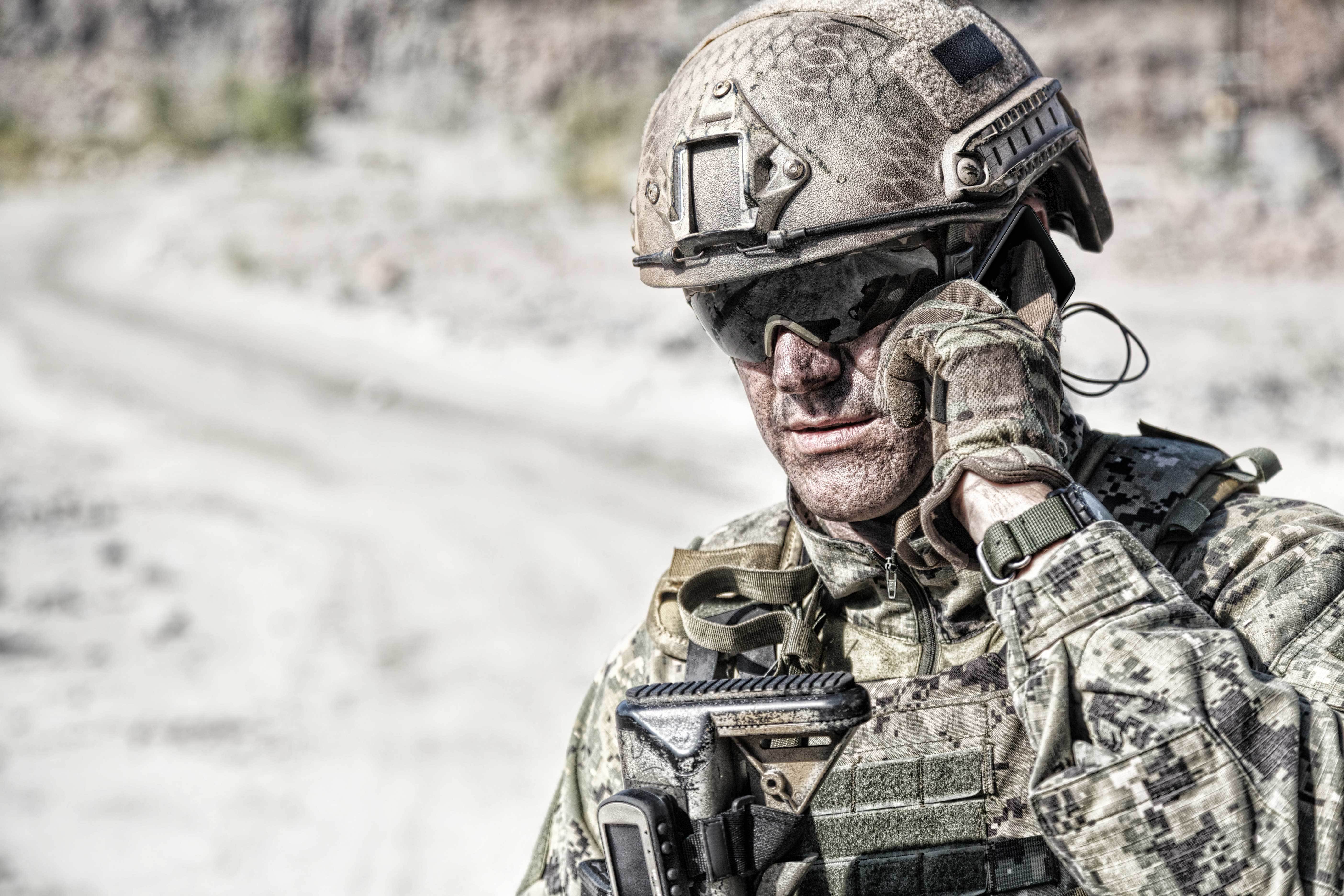
Conclusion
In an operating environment that is evolving at speed, adversaries are making use of new, easily available technology. SOF operators need to cultivate every advantage, the most important of which is greater situational awareness. HEO augments cognitive dominance by providing mission-specific data in real time at point of need. Intuitive mobile devices, such as smartphones and tablets, can remove the distractions and barriers to information. As a result, SOF operators can act faster, with greater accuracy and effectiveness.
To get there, “Quick wins are demanded,” David Spirk Jr., USSOCOM’s Chief Data Officer explained, as he called for “really creative ways to use technology which already exists today.” USSOCOM’s Science and Technology Directorate echoed that view, inviting industry input with an open call for solutions to its Hard Problems.
For example, while SOF operators currently make use of mobile devices that provide communications, data sharing and other capabilities to operators in the field, they don’t provide the level of connectivity, computing power and communication needed for real-time situational awareness, even in denied or austere environments.
Samsung Galaxy Tactical Edition smartphones, a mission-ready COTS mobile solution for HEOs, meets these requirements with a rugged, purpose-built design that is easy to use, integrates with an array of add-ons, including tactical kit task-specific mounts, case solutions, connectors and hubs, and provides defense-grade security at the hardware level. Rugged, ready and available today as a COTS solution, Samsung Galaxy Tactical Edition provides mission-ready capabilities with low cost, less complexity and quicker acquisition and deployment than custom solutions.
To meet near-term and longer-term mission needs of SOF operators as well as the vision of HEO, USSOCOM is moving quickly to find and acquire technologies to bring greater awareness and decision-making capability to the tactical edge. Mobility tools that deliver exceptional computing power, ease of use and advanced connectivity to the hands of operators at the tactical edge can help U.S. forces sustain their cognitive dominance, both today and for the future.
Learn more about Samsung solutions for federal government and defense applications. And discover how aviation mission readiness is enhanced by TAA-compliant mobile solutions.




